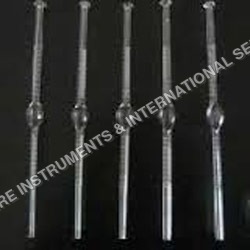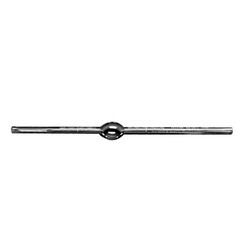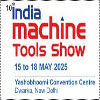- Tradeindia
- Testing & Measuring Equipment
- Stalagmometer
Stalagmometer
(17 products)Stalagmometer
Payment TermsCash Advance (CA), Cash in Advance (CID), Cheque, Telegraphic Transfer (T/T), Letter of Credit (L/C)
Sample AvailableYes
Sample PolicySample costs shipping and taxes has to be paid by the buyer
Stalagmometer
FOB PortMUMBAI
Payment TermsCash on Delivery (COD), Cash Against Delivery (CAD), Cash in Advance (CID), Cheque, Cash Advance (CA)
Supply Ability50 Per Week
Stalagmometer - Stoppers
Product DescriptionWe are delivering Stalagmometer - Stoppers to our consumers. It is mainly used to measure surface tension for control of wetting agents in nickel, acid copper, acid zinc, acid dips, acid pickles and chromic acid Electroplating Baths. These are easily available at leading market prices
More details...
Worldtradinglab Srls
Modena
More details...
Top Rated Products
FAQs Related to Stalagmometer
What is the stalagmometer used for?
What is the difference between a stalagmometer and a viscometer?
How does a stalagmometer measure surface tension?
What is the stalagmometric method?
More details...
Latest from Stalagmometer
Stalagmometer
By:
Labcare Instruments & International Services
Stalagmometer
By:
Edutek Instrumentation
Stalagmometer
By:
Advanced Technocracy Inc.
Stalagmometer - Stoppers
By:
Scientific Instrument Products

Explore in hindi
स्टैलेग्मोमीटर
Client Testimonials & Reviews

During the five years of our cooperation, tradeindia service attitude and professionalism have reassured me. The Indian market has always been a market that we value. Through the opening of tradeindia, our company has received a large number of inquiries, and the quality and quantity of inquiries are increasing in an orderly manner, as are the transaction customers. When we encounter problems, you will also answer patiently, help me solve problems, and the results are remarkable, I am very moved. We thank you tradeindia for your service and your support, hope we continue to cooperate happily, and wish you all the best in your work.

Ishamuddin
GLOBE ENTERPRISES
We have been associated with tradeindia for the past 4 years and we have no doubt to declare that our experience with tradeindia was good. We have received valuable inquiries through this and gain a large business. We are thankful to trade india to co-operate with us and we want to become the member of this company to many years.

Mamtamishra
AMB ELECTRONIC SYSTEM TECH PRIVATE LIMITED
We are associated with tradeindia from last 10 years and this platform helped us to improve and grow our business, branding and promotion. I am getting good business and I expect the same in the future.

VimalChavda
TESTO INDIA PRIVATE LIMITED
I have just connected with the tradeindia from last few Years, it is very good B2B platform to promote our products and services. So far my experience is good with tradeindia.com and Team.

S.Krishna
MCM INSTRUMENTS
We introduce ourselves as one of the leading Manufacturing, Marketing & Exporting of Test & Measuring Instruments. We are in this line of production for more than two decades. In this connection we would also like to stress the fact that Quality and Service are our two pillars of strength. We are also reputed to execute our orders in time and our customers depend on us for our timely after sales service. We are thankful to tradeindia.com for taking responsibility of promotion for our company and to generate new chain for our growth. Its services is good & we are satisfied.

SumitGuha
GEOLOGISTS SYNDICATE PVT. LTD.
We, do hereby, Wish to inform all concerned that we have been associated with tradeindia.com for the last several years and we are happy by the service received so far. We have received many trade enquiries through this portal. Quite a few of these trade enquiries received through tradeindia.com have resulted in business. We are quite happy with this association.

Mr.Manhar
VISION TRADE INC.
We are associated with tradeindia from since 12 years and good inquiry comes from tradeindia portal. We are very much happy for the service provided by tradeindia team.

VijayMahajan
RUPSON ENTERPRISES
Our company has been a member of tradeindia since many years. We are happy with the services provided by tradeindia to promote our products to customers all over the world. It has helped us to increase our visibility and subsequently in new queries and business. The team from tradeindia are also constantly interacting with us to help and improve our online Marketing. Thank you tradeindia team and keep us your service.

AslamIslam
ASIAN TEST EQUIPMENTS
We are the member of the tradeindia since last 6 years. We have good inquiries through the tradeindia.com, tradeindia is a place from where we can generate the business across the world wide.

KaushalChauhan
SWISSER INSTRUMENTS PVT. LTD.
We have been member of tradeindia.com and receiving inquiries. Further we are expecting more support from the team of tradeindia. Hoping for good service and support in future.
Stalagmometer Manufacturers | Suppliers in India
Company Name | Member Since |
|---|---|
Axle Steel & Fasteners Ahmedabad, India | 11 Years |
Edutek Instrumentation Ambala Cantt, India | 10 Years |
Labcare Instruments & International Services Ambala Cantt, India | 6 Years |
Wissen Techus Private Limited Ambala Cantt, India | 4 Years |
Upcoming Tradeshows
Gulfood 2025
Mon, 17 Feb, 2025 - Fri, 21 Feb, 2025
National Expo Raipur 2025
Sun, 19 Jan, 2025 - Wed, 22 Jan, 2025
International Crop Science Conference and Exhibition 2025
Tue, 21 Jan, 2025 - Wed, 22 Jan, 2025
LogiMAT India 2025
Thu, 13 Feb, 2025 - Sat, 15 Feb, 2025
WATER EXPO VIJAYAWADA 2025
Wed, 29 Jan, 2025 - Fri, 31 Jan, 2025
Printing South China 2025
Tue, 04 Mar, 2025 - Thu, 06 Mar, 2025
CHINA INTERNATIONAL FURNITURE FAIR 2025
Tue, 18 Mar, 2025 - Fri, 21 Mar, 2025
INDIA ART FESTIVAL 2024
Thu, 19 Dec, 2024 - Sun, 22 Dec, 2024
MachAuto 2025
Fri, 23 May, 2025 - Mon, 26 May, 2025
10th IMTOS-India Machine Tools Show 2025
Thu, 15 May, 2025 - Sun, 18 May, 2025
Popular Categories





















